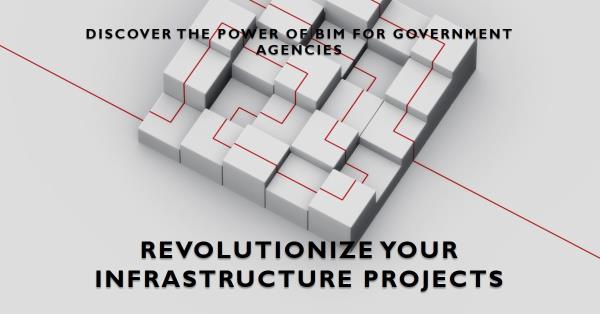The architectural industry is undergoing a significant transformation, thanks to the integration of digital technologies like Building Information Modeling (BIM) and Artificial Intelligence (AI). These technologies are reshaping how architectural firms design, plan, and execute projects, enabling them to improve both efficiency and accuracy. The fast-paced nature of construction, the demand for sustainability, and the increasing complexity of projects are pushing architectural firms to embrace digital tools to stay competitive in a rapidly evolving market.
This article delves into how BIM and AI are revolutionizing the architecture industry and how firms can capitalize on these tools to deliver superior outcomes. By leveraging these technologies, architectural firms can streamline workflows, reduce errors, improve collaboration, and enhance the overall client experience.
The Rise of Digital Transformation in Architecture
As global construction output is predicted to grow by 85% by 2030, reaching $15.5 trillion , architectural firms are under pressure to manage projects more efficiently. The traditional manual methods of design and documentation are no longer sufficient to meet the growing demand. Digital transformation technologies, such as BIM and AI, are crucial in this context, providing solutions that automate processes, enhance collaboration, and ensure precision.
What Is Building Information Modeling (BIM)?
BIM is a digital representation of the physical and functional characteristics of a building. It goes beyond traditional 2D designs by creating a comprehensive 3D model that integrates information from various stages of the project lifecycle, including design, construction, and facility management. BIM offers several advantages to architectural firms:
- Improved Collaboration: BIM serves as a single source of truth for all project stakeholders, from architects to engineers to contractors. It enables seamless communication and reduces the risk of miscommunication.
- Visualization and Simulation: The 3D models allow architects to visualize the entire project, run simulations, and identify potential challenges before construction begins. This reduces costly revisions during the construction phase.
- Accuracy in Estimations: BIM provides precise data on materials, labor, and costs, helping firms to create more accurate project estimates and timelines.
How BIM Enhances Project Efficiency and Accuracy
Architectural firms are finding immense value in BIM’s ability to streamline processes. According to a report by McKinsey & Company, the use of BIM can reduce project costs by up to 20% . Here’s how:
- Reduced Errors: BIM reduces human error by offering a highly detailed and accurate representation of the project. It detects clashes and discrepancies in the design phase, preventing costly errors during construction.
- Sustainability Considerations: BIM helps firms align with green building standards by simulating energy usage and material sustainability. Tools like thermal modeling and lifecycle analysis can help in designing environmentally friendly structures.
- Time Efficiency: BIM allows for real-time collaboration, meaning architects can make adjustments without waiting for feedback from other stakeholders. This significantly speeds up the decision-making process and keeps projects on track.
The Role of Artificial Intelligence in Architecture
While BIM is a cornerstone of digital transformation in architecture, AI is quickly emerging as a powerful tool to enhance design and operational efficiency. AI-driven tools analyze large amounts of data to offer predictive insights, automate mundane tasks, and create more innovative designs.
How AI Improves Project Efficiency
- Automated Design: AI can automate repetitive tasks, such as drafting floor plans and generating layouts. This allows architects to focus on more creative aspects of the project.
- Predictive Analytics: AI algorithms can analyze past projects to predict future project risks, costs, and timelines. This allows for better decision-making and risk mitigation.
- Enhanced Client Experience: AI-powered tools, such as virtual reality (VR) and augmented reality (AR), can give clients a more immersive experience, allowing them to walk through virtual models before the building is even constructed. This increases client satisfaction and reduces the likelihood of project revisions.
AI’s Role in Sustainable Building Practices
AI also plays a vital role in helping architectural firms meet sustainability goals. By analyzing vast datasets on materials, energy consumption, and environmental impact, AI helps firms design buildings that are not only efficient but also eco-friendly. AI tools can recommend sustainable materials, optimize energy usage, and even help design smart buildings that automatically adjust lighting and temperature to conserve energy.
How Risentech Helps Architectural Firms
With the rapid advancements in digital transformation, architectural firms need expert guidance to fully harness the potential of technologies like BIM and AI. This is where Risentech comes in. Risentech specializes in architecture consulting services, helping firms integrate digital tools to optimize project outcomes. Whether it’s implementing BIM for greater accuracy or utilizing AI to streamline design processes, Risentech offers tailored solutions that improve efficiency and promote sustainable building practices.
By working with Risentech, architectural firms can ensure they are not only adopting the latest technology but also aligning with global trends in sustainability and efficiency.
Case Studies: Real-World Applications of BIM and AI
Numerous architectural firms have successfully integrated BIM and AI into their operations. A 2021 survey by the Royal Institute of British Architects (RIBA) found that 73% of firms using BIM reported improved client satisfaction, and 67% experienced better project outcomes .
For instance, Zaha Hadid Architects have used AI to develop parametric designs that optimize building forms for both aesthetic appeal and environmental efficiency. The firm also leverages BIM to coordinate across global teams and manage complex projects with minimal errors .
Another notable example is Foster + Partners, which utilized BIM and AI for the Apple Campus 2 project. The technologies helped streamline collaboration between architects, engineers, and contractors, reducing project delays and optimizing resource allocation .
Challenges in Implementing BIM and AI
Despite the obvious benefits, adopting BIM and AI is not without its challenges. Some firms may struggle with the initial costs of implementing these technologies or lack the skilled personnel needed to operate them effectively. However, with the right consulting partner, these challenges can be overcome. Firms like Risentech provide training, support, and ongoing consultation to help architectural firms maximize their investment in digital technologies.
FAQs
1. What is BIM, and how is it different from traditional CAD?
BIM goes beyond CAD by creating a 3D model that integrates data from all phases of the project lifecycle. It also allows for better collaboration and more accurate estimates.
2. How does AI improve architectural design?
AI can automate repetitive tasks, offer predictive insights, and enhance sustainability by analyzing data on materials and energy use.
3. What are the key benefits of using BIM in architectural projects?
BIM improves collaboration, reduces errors, ensures more accurate project estimates, and supports sustainable building practices.
4. How can architectural firms integrate BIM and AI into their workflows?
Firms should start by investing in BIM and AI tools and seek consulting services, such as those offered by Risentech, to ensure a smooth transition and optimal results.
5. What is the future of AI in architecture?
AI is expected to play an increasing role in automating design, optimizing resource allocation, and enhancing sustainability efforts in architectural projects.
Conclusion
Digital transformation technologies like BIM and AI are game-changers for architectural firms. By embracing these tools, firms can not only improve efficiency and accuracy but also design more sustainable buildings. The integration of BIM and AI empowers architects to take on complex projects with greater precision, making it an essential part of the modern architecture landscape. With the guidance of consulting experts like Risentech, firms can seamlessly adopt these technologies and achieve superior project outcomes.
How will your firm leverage these digital tools to enhance your next project?
Also know How Government Agencies Can Leverage BIM for Infrastructure Projects








